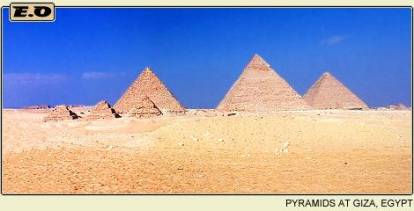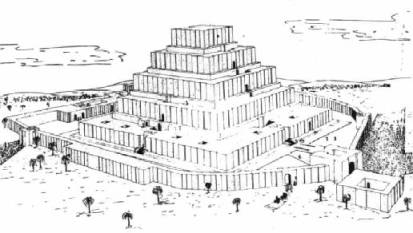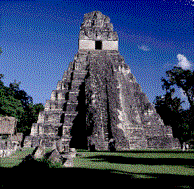The
Book of Genesis
Chapter Eleven
Babel, and Abraham’s Genealogy
Lesson
Verse: Pr 16:18; Ps 75:6,7
I.
Lesson Introduction
A. It has been about 100 years since the flood
B. The people are not spreading out like they were supposed to be doing
C. Instead they were getting more and more defiant of God’s will
D. The same still happens with Christians
1. Supposed to be spreading out and starting new churches (Acts 1:8; 8:1)
2. God sometimes has to allow the devil to come in to get the Christians moving again – through a Saul of Tarsus
3. God other times prefers to get them moving by his preachers, and through the work of the Holy Spirit (Acts 13:1-3)
II.
Lesson
A. One Language (Gen 11:1)
1. What was that language?
2. Possibly could have been Hebrew
3. Eber could have retained the pre-Babel language
B. One Direction – West (Gen 11:2)
1. From the mountains of Ararat
2. To the plain of Shinar, which is near to the river Euphrates and a perfect place for a capital city
C. One Empire – Babel, under Nimrod (11:3-4)
1. The city of Babel
a. No more tents, or temporary dwelling places – this city is going to be big, and permanent, and grandiose – the centre of an EMPIRE!
b. Made out of brick – kiln-fired, which means they were well advanced in brick-making, instead of using the slower sun-dried process.
c. Used Bitumen Slime for mortar – it is said that, “the slime used in those days was so tenacious that it is almost impossible, even today, to detach things which are found cemented with it.”
d. This city had a one world government, one currency, one language, one world ruler, and one mark that allowed them to buy and sell – that identifying mark was REBELLION to God These things are found in Rev. 13 as things that will be back in power in the Tribulation!
2. The Tower of Babel
a. Discovered in 1876
b. Reached at least 300 feet high (about 30 stories high)
c. It contained actually 8 levels, most of which were 20 feet high
d. It was designed with the hope of one day reaching as far up as heaven
e. What is found today may be just what was the first attempt at building such a tower
f. This is called a ziggurat – they occur all over the earth – they seem to be an attempt to retain some of the ways of the pre-flood world
1) Aztecs of South and Central America
2) Pyramids of Egypt
3) Mayans (2,000 BC – 1400 AD)
4) Chinese
5) Incas
g. Built like the New Jerusalem

Site
of King Untash Napirisha's Ziggurat, Chogha Zanbil,
25 miles south-east of Susa, c 1250 BC



Mayan Ziggarat - Tikal Temple I and the Great Plaza
3. They were concerned about their own name – not the name of God - Jehovah
4. One Religion
a. Worshipping the “gods” of the pre-flood world
b. This is where the Greek and Roman mythological “gods” get their source – all myths have some truth at their source
c. Around 300 BC, the Greek historian Herodotus came to the correct conclusion when he said that all the religions of the world originally came from Babylon. That is, all except one (Judaism).
d. God HATES religions getting together (2Cor 6:14-18) – it is called Ecumenicalism
5. Times that people need to be unified
a. As husband and wife
b. As family – but only to a point (Mt 10:37)
c. As a country – only until the government crosses with the word of God
d. As a church – only as long as the church preaches from one absolute authority (Cf John 17)
D. God Personally Investigates (Gen 11:5)
1. God personally shows up, and appears as a man
2. God does this several times in the Old and New Testament
a. Appears to Abram (Gen 18:1-22)
b. Goes personally to Sodom (Gen 18:21)
c. Appears in Mt Sinai (Ex 19:11)
d. Appears to mankind as the Son (Mt 1:21; John 3:13)
E. The Need for Restraining Man (Gen 11:6)
1. The devil works constantly to confound the Lord’s plan to bring in the Messiah at the right time (Gal 4:4)
2. Here, man, once unified, and focused can do just about anything they want – which is not always the best thing
a. This is self-evident today
b. The more and more that people unite, the more power, and the more accomplishments they do
c. People have an innate desire to break the bands of God’s laws (Psalm 2:1-3)
3. God told man what to do – spread out and make boundaries (Acts 17:24-27)
4. God acts to keep man from forcing God to have to destroy them again
5. Thank God for the restraining hand of God!
a. Restrained Abimelech (Gen 20:6)
b. Restrained Laban from hurting Jacob (Gen 31:7)
c. Restrained enemies from attacking Jacob’s family (Gen 35:5)
d. Restrains enemies when you are busy serving and obeying the Lord (Ex 34:24)
e. God restrained David from murdering Nabal (1Sam 25:26,34)
F. The Confounding of Languages (Gen 11:7-9)
1. Started out as one
2. Divided into at least 58 base languages (counted from the people-groups of chapter 10)
3. Resulting in currently 2796 languages today, and 6,760 dialects
4. That makes for a lot of confusion
G. The Godly Heritage of Shem (Gen 11:10-26) – at least SOMETHING got passed on down through Shem’s family through to Abram!
1. Shem
2. Arphaxad
3. Salah
4. Eber
5. Peleg
6. Reu
7. Serug
8. Nahor
H. The Family of Abram (Gen 11:27-32)
1. Terah – means, “Wanderer”
a. Abram – father of a nation
b. Nahor – means “Snorting”
1) Names a city after himself (Gen 24:10)
2) Marries Milcah, the daughter of Haran
3) Begets Bethuel – called “Bethuel the Syrian” (Gen 28:5)
a) Begets Laban – the oldest brother (Gen 24:29)
(i) Begets Leah
(ii) Begets Rachael
b) Begets Rebekah (Gen 22:23) who will marry Isaac
c. Haran – means, “Mountaineer”
1) Begat Lot – he is Abram’s nephew
2) Haran dies early, before his father Terah dies
2. Abram
a. Note that Noah lives to see Abram born
b. Marries Sarai, who was his half-sister (Gen 20:12)
c. Has no children until 100 years old
3. Ur of the Chaldees
a. Ur means “Light, or the moon city,” a city "of the Chaldees," the birthplace of Haran, the largest city of Shinar or northern Chaldea, and the principal commercial centre of the country as well as the centre of political power. It stood near the mouth of the Euphrates, on its western bank.
b. A very pagan city, closely linked with Babylon
c. It is from here that Abram is called to leave in order to follow God!
III.
Charts
|
|
Age
when a Father |
Lived
after |
Total
Age |
Date
Born |
Date
Dies |
|
Creation |
|
|
|
4,004 |
|
|
Adam |
130 |
800 |
930 |
4,004 |
3074 |
|
Seth |
105 |
807 |
912 |
3,874 |
2,962 |
|
Enos |
90 |
815 |
905 |
3,769 |
2,864 |
|
Cainan |
70 |
840 |
910 |
3,679 |
2,769 |
|
Mahalaleel |
65 |
830 |
895 |
3,609 |
2,714 |
|
Jared |
162 |
800 |
962 |
3,544 |
2,582 |
|
Enoch |
65 |
300 |
365 |
3,382 |
3,017 |
|
Methuselah |
187 |
782 |
969 |
3,317 |
2,348 |
|
Lamech |
182 |
595 |
777 |
3,130 |
2,353 |
|
Noah |
502 |
448 |
950 |
2,948 |
1,998 |
|
Shem |
100 |
500 |
600 |
2,446 |
1,846 |
|
The
Flood |
|
|
|
2,346 |
|
|
Arphaxad |
35 |
403 |
438 |
2,346 |
1,908 |
|
Salah |
30 |
403 |
433 |
2,311 |
1,878 |
|
Eber |
34 |
430 |
464 |
2,281 |
1,817 |
|
Tower
of Babel |
|
|
|
2,250 |
|
|
Peleg |
30 |
209 |
239 |
2,247 |
2,008 |
|
Reu |
32 |
207 |
239 |
2,217 |
1,978 |
|
Serug |
30 |
200 |
230 |
2,185 |
1,955 |
|
Nahor |
29 |
119 |
148 |
2,155 |
2,007 |
|
Terah |
70 |
135 |
205 |
2,126 |
1,921 |
|
Abraham |
100 |
75 |
175 |
2,056 |
1,881 |
IV. Conclusion
V. Study Questions – Pop Quiz
A. List an Outline of the preceding 9 chapters
1. _________________________________________________
2. _________________________________________________
3. _________________________________________________
4. _________________________________________________
5. _________________________________________________
6. _________________________________________________
7. _________________________________________________
8. _________________________________________________
9. _________________________________________________
B. What did God do on the 4th day of Creation? _______________________ ___________________________________________________________
C. List the first three dispensations:
1. _________________________________________________
2. _________________________________________________
3. _________________________________________________
D. List one of the five things that God cannot do: _____________________ ___________________________________________________________
E. How did sin get into the world? _________________________________ ___________________________________________________________
F. List the names of Adam’s 3 sons as given in the Bible:
1. ______________________
2. ______________________
3. ______________________
G. List the names of Noah’s 3 sons as given in the Bible:
1. ______________________
2. ______________________
3. ______________________